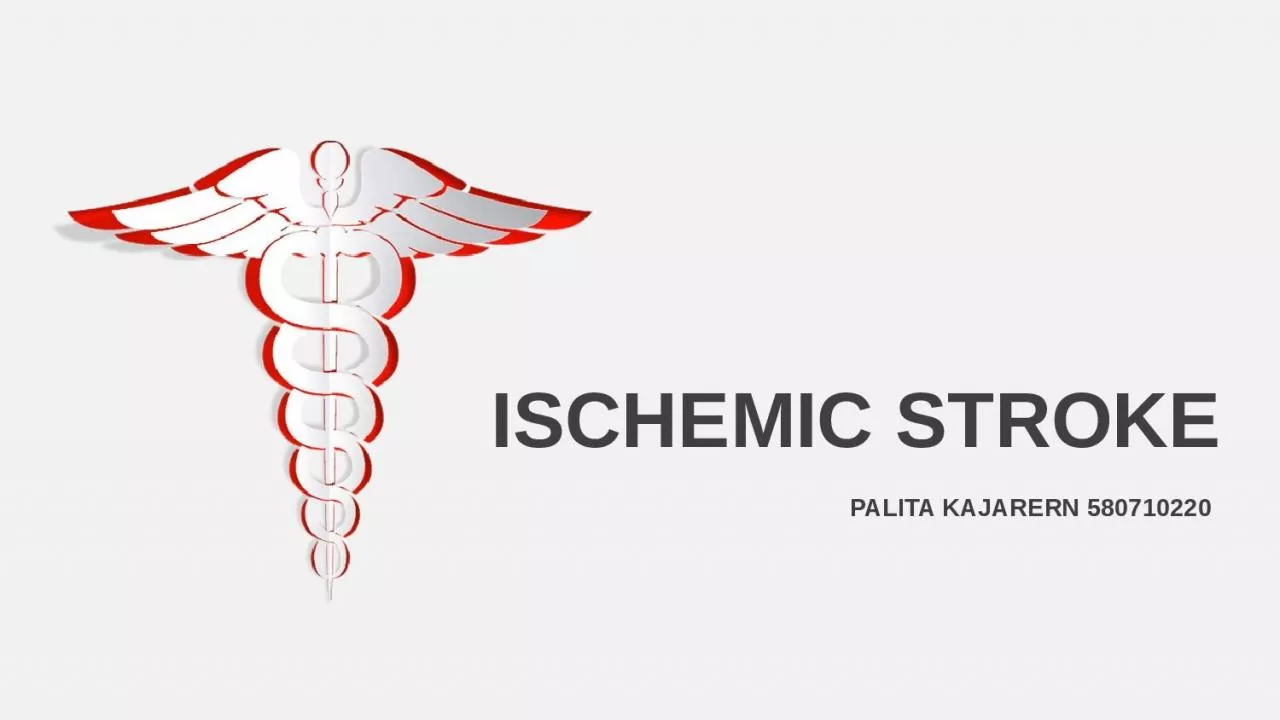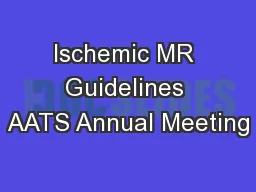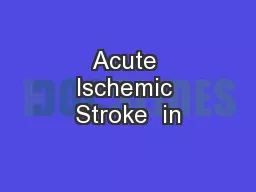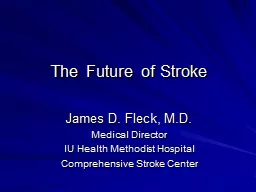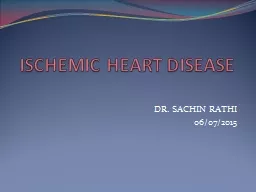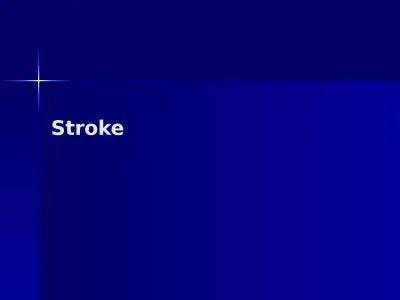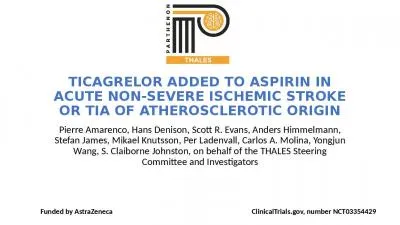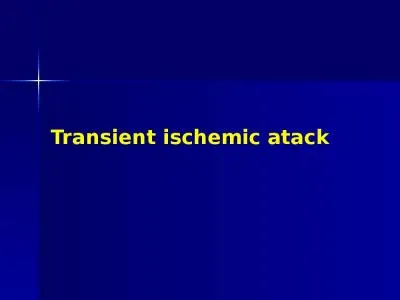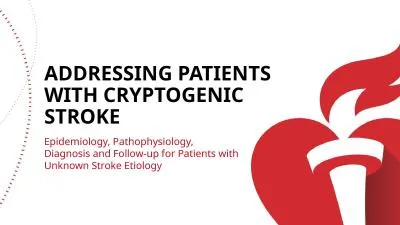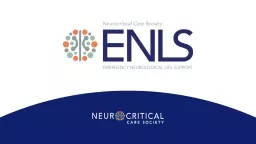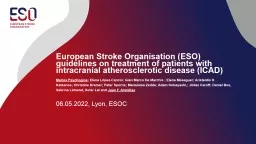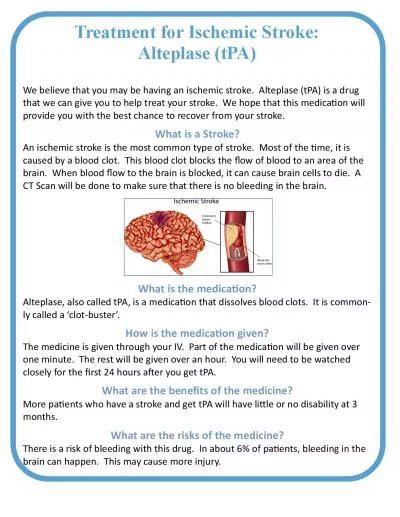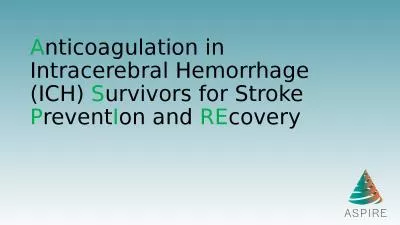PPT-ISCHEMIC STROKE PALITA KAJARERN 580710220
Author : KittyCat | Published Date : 2022-08-02
OBJECTIVE นกศกษาแพทยทราบแนวทางการประเมนและวนจฉยผปวยโรคหลอดเลอดสมองเบองตนได
Presentation Embed Code
Download Presentation
Download Presentation The PPT/PDF document "ISCHEMIC STROKE PALITA KAJARERN 58071022..." is the property of its rightful owner. Permission is granted to download and print the materials on this website for personal, non-commercial use only, and to display it on your personal computer provided you do not modify the materials and that you retain all copyright notices contained in the materials. By downloading content from our website, you accept the terms of this agreement.
ISCHEMIC STROKE PALITA KAJARERN 580710220: Transcript
OBJECTIVE นกศกษาแพทยทราบแนวทางการประเมนและวนจฉยผปวยโรคหลอดเลอดสมองเบองตนได. Jeanne Carroll, RN, BA, CCRC. 2. Ivorine Yu, PhD. 1. Fen-Lei Chang, MD, PhD. 1,2,3. 1. Indiana University School of Medicine – Fort Wayne. 2. Parkview Neuroscience and Stanley Wissman Stroke Center. Seattle, WA. Irving . Kron, M.D.. Professor and Chairman Department of Surgery. University of Virginia Hospital . Charlottesville, Virginia. AATS Ischemic MR Guideline Writing Group Roster. Irving L. Kron, Chair. Children. A Brief . Overview . Tammy . Hennika. , M.D.. Childhood stroke activations. What neuroimaging?. What labs?. What is the treatment? . Can we give . tPA. ?. If not a stroke, what could it be? . Medical Director. IU Health Methodist Hospital. Comprehensive Stroke Center. Disclosures. None. Stroke Statistics. Heart Disease and Stroke Statistics 2014. ~795,000 new or recurrent strokes/year. 87% Ischemic, 10% ICH, 3% SAH. 06/07/2015. ISCHEMIC HEART DISEASE. INTRODUCTION. PATHOPHYSIOLOGY. IMAGING IN ISCHAEMIC . HEART . DISEASE (IHD). COMPLICATION OF IHD. ISCHEMIC HEART DISEASE. INTRODUCTION. Ischaemic heart disease (IHD), the leading cause of . SCENS. Learning Objectives. Complete a focused assessment on the patient presenting with signs and symptoms of a stroke. Initiate facility specific protocol for the patient presenting with an ischemic stroke. Physical and pshychosocial handicap. Lesions of brain parenchima due to pathology of cerebral circulatory system that leads to hemorrhageae or ichemic lesions. Cerebral Anatomy . Vascular circulation: Anterior and Posterior . ORIGIN. Pierre . Amarenco. , Hans . Denison. , . Scott R. Evans, Anders . Himmelmann. , Stefan James, Mikael . Knutsson. , . Per . Ladenvall. , Carlos . A. Molina. , . Yongjun. Wang. , S. . Claiborne . Clinical picture of TIA. Neurologic deficits are . completelly and spontaneously reversible. . in less than 24 hours. No signs on CT. TIA is usually characterized by focal neurological symptoms. . There are 2 main groups of TIA’s symptoms:. Epidemiology, Pathophysiology, Diagnosis and Follow-up for Patients with Unknown Stroke Etiology. Stroke as a Health care Issue in the U.S.. ≈795,000,000 . new or recurrent strokes. . yearly. 87% . Content. : Archana Hinduja, MD; M . Sohel. Ahmed, MD. Slides. : Archana Hinduja, MD; M . Sohel. Ahmed, MD. Editors’ Note: Global Considerations. The intent of the editors, authors, and reviewers of this ENLS topic was not to address all the variations in international practice for the different diseases. We have discussed major practice variances (e.g., the availability of diagnostic testing, or the type of medications used) and encourage learners to use the ENLS algorithms as a framework on which any relevant local practice guidelines can be incorporated.. Organisation. (ESO) guidelines on treatment of patients with intracranial atherosclerotic disease (ICAD). Marios Psychogios. ; Elena López-. Cancio. ; Gian Marco De . Marchis. ; Elena . Meseguer. ; . that we can give you to help treat your stroke. We hope that this medica�on will provide you with the best chance to recover from your stroke. What is a Stroke? An ischemic stroke is S. urvivors for Stroke . P. revent. I. on. and . RE. covery. Mean reduction of 9/4 mm Hg. Of course you want to join the first ICH prevention study – . ASPIRE. – in recent NIH history! . This is a great trial to contribute to an active clinical practice question and a wonderful way to build out your StrokeNet trial portfolio!.
Download Document
Here is the link to download the presentation.
"ISCHEMIC STROKE PALITA KAJARERN 580710220"The content belongs to its owner. You may download and print it for personal use, without modification, and keep all copyright notices. By downloading, you agree to these terms.
Related Documents

